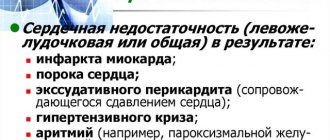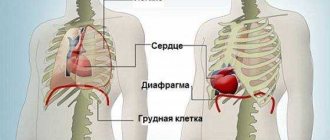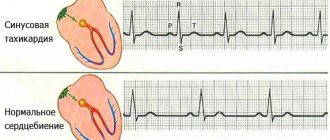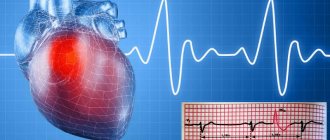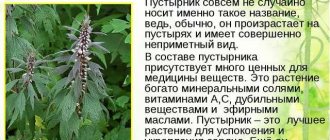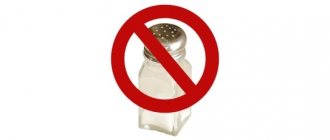Heart failure is a life-threatening disease. To understand the degree of risk faced by people suffering from this type of pathology, it is enough to make a small comparison. If we consider the mortality rate of cancer patients, it turns out to be much lower than the mortality rate from heart failure.
Heart failure is the final process of many diseases, such as hypertension, myocardial infarction and others. There comes a time when the heart cannot fully cope with the blood supply to the body. Initially, this occurs during physical activity, then it can intensify and be present at rest.
The most common sign of heart failure is shortness of breath during movement, exertion, climbing to upper floors, as well as swelling. If the patient notices the appearance of similar symptoms in time and consults a specialist, the disease can be treated in the early stages.
Essentially, heart failure is a lack of oxygen. Many organs and systems of the human body do not receive enough of it and slowly gradually die, which leads to irreparable consequences. Therefore, it is so important to be attentive to your symptoms and not to miss the appearance of signs indicating the development of severe pathology.
Patients do not always have the opportunity or desire to be treated by qualified specialists in medical institutions. Often such patients choose folk remedies and healing methods. And in most cases they win the battle for their health. The arsenal of traditional medicine amazes with its richness and diversity. Therefore, here for everyone there is a suitable method for treating heart failure.
Difference between treatment of acute and chronic heart failure
The acute form of heart failure develops very quickly, it is a real threat to the patient’s very life.
In such cases, treatment of heart failure at home is not provided; on the contrary, it should only be carried out in the intensive care unit.
A similar condition can occur in a person on the street, so it is important for everyone to know about the most important principles of providing first aid to such patients. Here's what to do in these cases:
- The first step is to call an ambulance to the patient.
- Place the patient in a comfortable position so that his legs are down (that is, move him from the ground to a bench). Thanks to this position, the patient will begin to flow blood from the lungs to the legs. If possible, you need to warm his feet or cover him with something warm.
- It is advisable for the patient to artificially increase the volume of the chest - for this you need to raise his shoulders, but not the arms themselves!
- If the patient has not yet developed cyanosis (the skin has not turned blue) and cold sweat has not appeared, then he can be given a nitroglycerin tablet under the tongue. But if the described signs are already present, that is, cardiogenic shock has occurred, then nitroglycerin can only speed up a person’s death. Wait for the ambulance!
Treatment of chronic heart failure is carried out with medications at home, but in addition to them, a mandatory review of lifestyle is also required, which we will discuss below.
As a result, trust the treatment of the acute form of the disease only to doctors in the hospital, but you can fight the chronic form (only after the appointment of the attending physician) at home, and the faster you add the recommended lifestyle and traditional methods to the pills, the faster the patient’s condition will improve.
Main symptoms
All types of this disease are characterized by:
- weakness;
- lethargy;
- rapid heartbeat (tachycardia);
- lack of interest in life;
- sometimes deep depression develops.
- dyspnea;
- dizziness;
- confusion;
- debilitating cough at night, which can result in an asthma attack;
- fatigue with the slightest physical exertion.
Right ventricular
With this type of disease, the blood stagnates in a large circle, so the patient experiences:
- discomfort in the right hypochondrium;
- accumulation of fluid in the abdominal cavity, that is, ascites;
- swelling of the lower extremities, which intensifies in the evening and disappears after a night's sleep;
- During the day, the need to urinate is reduced, but at night, after relaxing in a supine position, the patient often feels the need to empty the bladder.
With this type of disease, pneumonia can develop due to the accumulation of excess fluid in the lungs.
Non-drug therapies
When heart failure is diagnosed in older adults, treatment does not necessarily involve medications alone. For them, and in general for patients of all ages, an optimal daily routine, balanced nutrition, therapeutic exercises and dosing of physical activity are recommended. Treatment of heart failure is also facilitated by traditional methods of treatment, sanatorium rest and psychological gymnastics.
Nutrition
It is simply necessary for heart failure. Patients suffering from this pathology need to limit the consumption of liquid and salt in their diet.
In the initial stages of salt in food should not be more than 3 g per day, and in more severe cases - even 1.8 g. In the initial stage of the disease, liquids in any form should not be drunk in total more than 1.5 liters, while with its developed form (stages 2-3), the amount of water must be reduced to 0.75 liters.
Read more about the diet for heart failure in another article on our website.
Physical training
Physical prevention of heart failure should be a mandatory component of treatment. 5 times a week you need to take quiet cycling or walking walks for half an hour, while being sure to control your pulse. Fresh air is an essential component of heart failure treatment.
When treating heart failure at home, physical activity cannot be completely excluded for the patient, because a complete ban on physical activity is introduced only at the terminal stage of the disease. If loads are completely eliminated, structural changes will occur in muscle tissue, which will subsequently have negative consequences.
With the help of moderate doses of physical activity, you can increase the overall tone of the body, increase the effectiveness of medications, and lower the level of neurohormones.
Symptoms of the disease
The following types of heart failure are distinguished:
- left ventricular;
- right ventricular;
- biventricular (with pathology of two ventricles at once).
| Types of arrhythmia | Characteristic | Symptoms |
| Sinus tachycardia | Formed due to excessive stress on the body, anxiety, and ARVI | Strong heartbeat, pulsation in the temples, pulse over 90 beats/min. |
| Sinus bradycardia | Characteristic for professional athletes, as well as for hypotension and endocrine system disorders | General malaise, dizziness, heart pain, heart rate up to 55 beats |
| Sinus arrhythmia | Observed in adolescents, associated with respiratory function, does not require treatment | No symptoms observed |
| Extrasystole | Heart contractions occur out of sequence, begin due to an incorrect lifestyle, due to bad habits | Freezing or sudden increases in heart rate |
| Paroxysmal tachycardia | Excessive heart rate, occurs suddenly and disappears the same way | Heart rate up to 220 beats/min, sweating, weakness, fainting |
| Atrial fibrillation | Characterized by chaotic irregular heart contractions, the atrium does not contract completely | Heart rate 100-150 beats/min., sometimes even up to 300 beats, shortness of breath, chest pain, pulse may not be felt, convulsions, fainting |
| Heart block | Slowing and stopping the heart | Absence of pulsation in large arteries, convulsions, fainting, possible death |
General signs of arrhythmia:
- swelling of the limbs;
- hard breath;
- cyanosis of the face;
- flutter of the heart muscle;
- weakness.
Drug treatment
There are many drugs used in the treatment of heart failure, but they all belong to one of the main types:
- beta blockers;
- ACE inhibitors (angiotensin-converting enzyme);
- diuretics;
- angiotensin receptor blockers;
- aldosterone antagonists;
- cardiac glycosides.
Also, in case of heart failure, based on the individual characteristics of the patient’s body, additional medications are prescribed that are designed to increase the effectiveness of treatment.
ACE inhibitors
They are indicated for heart failure of any stage. Captopril and enalapril have been successfully used for this for a long time , but there are more recommended new drugs of this type: perindopril , lisinopril and fosinopril , which can be used even if heart failure is accompanied by hypertension. Quinapril and ramipril are also recommended for use .
Initially, a one-time dose of the drug is prescribed in a minimum dosage, then it is gradually increased to the optimal dose.
ACE inhibitors are effective because they have a dual effect:
- firstly, an immediate effect occurs due to the blocking of active neurohormones;
- secondly, they also have a prolonged effect, gradually blocking neurohormones in tissues.
Beta blockers
This group of drugs is no less important in the process of eliminating the symptoms of heart failure. They can significantly reduce deficiency, even at a severe stage of its development, eliminating the negative effects of catecholamines and metabolic processes. Recommended for use: bisoprolol, metoprolol, carvediol, sotalol .
The most effective is the combined use of ACE inhibitors and beta-blockers. Since the latter are potent drugs, their use begins with a minimum dosage and taken once a week. In the first days of treatment with beta-blockers, the symptoms of chronic heart failure may worsen, so their use should be under the supervision of the attending physician.
It is not recommended to use beta-blockers in patients with bradycardia, bronchial asthma, hypotension, or severe obliterating endarteritis.
Aldosterone antagonists
Potassium-sparing drugs help cope with hypomagnesemia and overhydration. Such drugs are aldosterone antagonists, the most used of which is aldactone .
of spironolactone works well with ACE inhibitors and beta-blockers . This dose for individual use of the drug should be increased to 100-200 mg.
In cases of severe HF and the simultaneous presence of diabetes mellitus, it is better to use eplerenone .
The simultaneous use of antagonists, inhibitors and beta blockers has a beneficial effect on heart function.
Angiotensin receptor blockers
For a long time, WHO has been studying how to cure heart failure by practicing complex treatment, including receptor blockers that prevent heart failure from progressing to a more severe stage.
The most commonly used drug is candesartan . Prescribing valsartan or losartan even in the presence of nephropathy and diabetes mellitus leads to successful blocking of heart failure. In addition to their direct purpose, these drugs serve to prevent the occurrence of the decompensated stage of heart failure.
Diuretics
Diuretics are designed to combat the retention of excess water and sodium ions in the body. If there is swelling of the legs due to heart failure, treatment must include diuretics, regardless of the stage of heart failure.
There are several groups of diuretics, differing in their focus. Carbonic anhydrase inhibitors are associated with proximal tubule function. They are affected by acetazolamide.
Thiazide diuretics work in the cortical zone, these include chlorthalidone, indrapamide, metolazone and hypothiazide . Loop diuretics ( torsemide, bumetanide, furosemide ) work in their zone. Competitive diuretics such as spironolactone and non-competitive diuretics ( triamterene ) act in the area of the distal tubules and help the body retain potassium.
The loop and thiazide groups of drugs are the most versatile and therefore most widely used, especially when it comes to how to treat heart failure in the elderly.
Treatment should begin with minimal doses of diuretics with a gradual increase and transition to a combination of different types of diuretics. For example, when choosing a tactic for treating leg swelling in heart failure, torasemide is started in an amount of 5-10 mg and gradually increased to 100 mg or even 200 mg.
Diuretics are prescribed along with ACE inhibitors and mainly serve to remove excess fluid from the body. Their effect can manifest itself in two phases - during fluid stagnation, an active phase is observed, and after compensation they maintain a euvolumic state. During the active phase, the administration of drugs should be accompanied by an excess of urine output by 1-2 liters per day compared to the volume of fluid drunk.
Cardiac glycosides
Treatment of shortness of breath in heart failure, along with its other symptoms, requires the use of cardiac glycosides, the action of which occurs through three mechanisms: chronotropic, inotropic and neuromodulatory.
In practice digoxin , which combines well with other drugs and has optimal characteristics. In addition, corglycon and strophanthin .
Additional drugs
In addition to the listed groups of drugs, additional drugs are used in the treatment of heart failure: statins, peripheral vasodilators (hydralazines, dihydropyrines), antiplatelet agents, antiarrhythmics (amiodarone) and a number of others. They are designed to minimize the side effects that some patients experience in response to the use of essential drugs. Such auxiliary therapy is necessary if the patient has hypertension, coronary heart disease, diabetes and other related ailments. For example, digoxin, as an antiarrhythmic, is necessary in the presence of atrial fibrillation.
Treatment of heart failure using traditional methods
Chronic heart failure develops over a long period of time, so folk recipes become quite acceptable in the fight against this disease. Most often, such treatment is based on herbal and other natural infusions, tinctures and mixtures.
When using folk remedies for heart failure and lack of oxygen, one should never forget about classical medicine, since their improper use can further hasten the death of the patient. At the same time, two components of the treatment program must remain unchanged - lifestyle adjustments and diet.
As for cases of acute heart failure, which is always associated with an emergency condition, here treatment with traditional methods will definitely not help, since urgent pharmacological treatment and resuscitation measures are required, which can only be taken in the conditions of appropriate medical hospitals.
But at an early stage, folk remedies for heart failure in adults can be used to eliminate its symptoms.
Folk remedies for edema
One of the unpleasant symptoms of heart failure is swelling. To eliminate them, there are a lot of synthetic diuretics, but they can be partially replaced by folk diuretics for heart failure. Honey mixed with radish juice helps get rid of swelling well. But this remedy is not suitable for those who are allergic to honey.
St. John's wort, lily of the valley, marigold infusion, flowering knotweed juice, and rowan juice have a diuretic effect. From these dried plants, you can prepare medicinal decoctions according to the instructions on the package or on the recommendation of a doctor.
- The tincture of lovage root is made as follows: pour 100 g of crushed dry lovage root with 300 ml of pure alcohol, and place in a dark place for 2 weeks to infuse. Take the resulting tincture, one tablespoon before meals, 3 times a day.
- A collection of equal parts of dry crushed bearberry and hernia. Pour 2 tbsp into the ladle. spoons of this mixture, pour 0.5 liters of boiling water over it and then boil for another 10 minutes. Then cool the broth and filter. These folk remedies can be used three times a day, 1/3 cup.
- Infusion of wheatgrass, horsetail and juniper. You need to mix 1 part wheatgrass rhizome, 2 parts horsetail and 2 parts juniper berries. Pour a teaspoon of this mixture into one glass of boiling water and leave for 20 minutes, then strain. Take the infusion three times a day, a tablespoon 20 minutes before meals.
- Horsetail with birch leaves. The collection must be made up of equal shares of both components. Pour two tablespoons of it into 0.5 liters of boiling water, cover with a lid and let the liquid cool. The infusion can be taken 4 times a day, 0.5 cups before meals.
- Infusion of juniper, angelica and cornflower. Prepare a mixture: 4 parts juniper berries, 3 parts angelica root and 3 parts cornflower flowers. Brew a teaspoon of this mixture in a glass of boiling water, leave for 20 minutes, then strain. The infusion should be drunk 4 times a day, a tablespoon. This remedy helps to effectively get rid of severe swelling.
Folk recipes for hawthorn for heart failure are very useful, since the beneficial substances included in its composition tone the muscles of the heart, relieve them from overwork, and as a result stimulate the necessary activity of the organ. We recommend the following recipes:
- Grind the hawthorn berries. 1 tbsp. l. pour 1 glass of hot water and leave for half an hour. Strain the infusion through cheesecloth and drink ½ glass every morning before meals and in the evening 2 hours before bedtime.
- Wash 1 cup of fresh or thawed hawthorn berries, chop and add 1 cup of water. Warm them up to 30-35 degrees, then wrap them in gauze and squeeze the juice out of the berries with a tablespoon. The remaining berries can be used for reuse. Drink the resulting liquid 1 tbsp. l. 3-4 times a day an hour before meals.
- Pour 70-100 g of black tea and 1 tsp into the teapot. hawthorn berries, chamomile flowers, valerian, motherwort, peppermint, 1-2 tbsp. l. rosehip berries. Brew this mixture to maximum strength and drink like regular tea.
Read more recipes and useful ones in our article “Swelling in heart failure: why they occur and how to relieve them.”
Folk remedies for shortness of breath
Alternative treatment for shortness of breath in heart failure is represented by the following recipes:
- Prepare a collection of equal parts of thyme, blackberry, woodruff, marsh cudweed and motherwort. Brew a spoonful of this mixture in a glass of boiling water, and then simmer for another 15 minutes in a water bath, then leave for another hour. Drink the drug 3 times a day, 50 ml.
- Chop aloe leaves, add water in a ratio of 1:5 and leave for 10 days in the dark. When taking the product, mix one teaspoon with the same amount of honey and drink it three times a day.
- Squeeze the juice from 20 lemons, mix it with 350 g of minced garlic and put it in the refrigerator for a day. This folk remedy for shortness of breath should be taken once a day, a teaspoon, diluted in a glass of water.
How do you treat heart failure, and does your method help? Tell your story in the comments, help our other readers cope with their illness!
